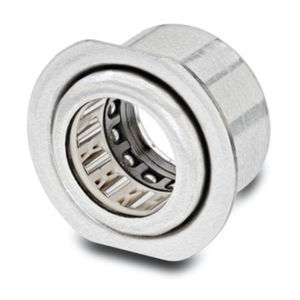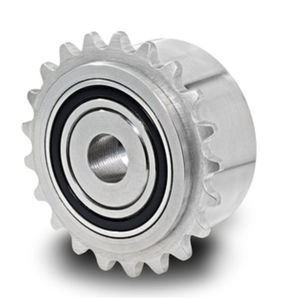
- Power Transmission - Mechanical components
- Bearing and Linear Guide
- Ball bearing bearing
- Rollax Kugellagerfabrik GmbH & Co. KG
Ball bearing bearing NVH single-rowsteelfor motors

Add to favorites
Compare this product
Characteristics
- Rolling element
- ball bearing
- Configuration
- single-row
- Material
- steel
- Applications
- for motors, transmission
- Other characteristics
- high-performance, low-noise
Description
Passive structure-borne sound isolation reduces noise emissions
The current trend is towards e-mobility. However, with the electrification of vehicle drives other challenges have arisen. For example miscellaneous power units such as air conditioning compressors and brake booster systems generate vibrations from which unpleasant noises can result. Previous solutions have been restricted to very high accuracy in the manufacturing process and the use of specialised lubricants to reduce the running noise. Unfortunately, this helps little against vibration and structure-borne sound being converted to airborne sound.
The wiser choice is NVH (Noise Vibration Harshness) bearings from ROLLAX, that thanks to passive structure-borne sound isolation, can reduce noise levels by as much as 10 dB(A).
An insight into noise generation in motor vehicles.
For those who wish to reduce interior noise levels in motor vehicles must first understand how these noises develop. At this point it is important to differentiate between structure-borne and ultrasonic noise. Structure-borne noise is not audible to us. It is created when a solid body vibrates. An example would be the shaft in an electric motor or a transmission. Where these vibrations meet a resonance body such as the coachwork, door panel or the vehicle bulkhead they are transformed into audible sound. Where the resonance body is positioned near to, or has a rigid connection with, the passenger compartment this is perceived as an annoying noise.
ROLLAX NVH bearings allow an acoustic decoupling of the vibration generator and the resonance body.
Catalogs
Image brochure
9 Pages
Other Rollax Kugellagerfabrik GmbH & Co. KG products
New Mobility
Related Searches
- Rolling bearing
- Steel bearing
- Ball bearing bearing
- Roller bearing
- Radial rolling bearing
- Axial rolling bearing
- Single-row bearing
- Deep groove ball bearing
- Double-row bearing
- Precision bearing
- Cage assembly bearing
- High-speed bearing
- Linear bearing
- Linear ball bearing
- One-way clutch with internal bearings
- Roller overrunning clutch
- Sealed bearing
- Backstop backstop
- Automotive bearing
- Heavy load bearing
*Prices are pre-tax. They exclude delivery charges and customs duties and do not include additional charges for installation or activation options. Prices are indicative only and may vary by country, with changes to the cost of raw materials and exchange rates.





